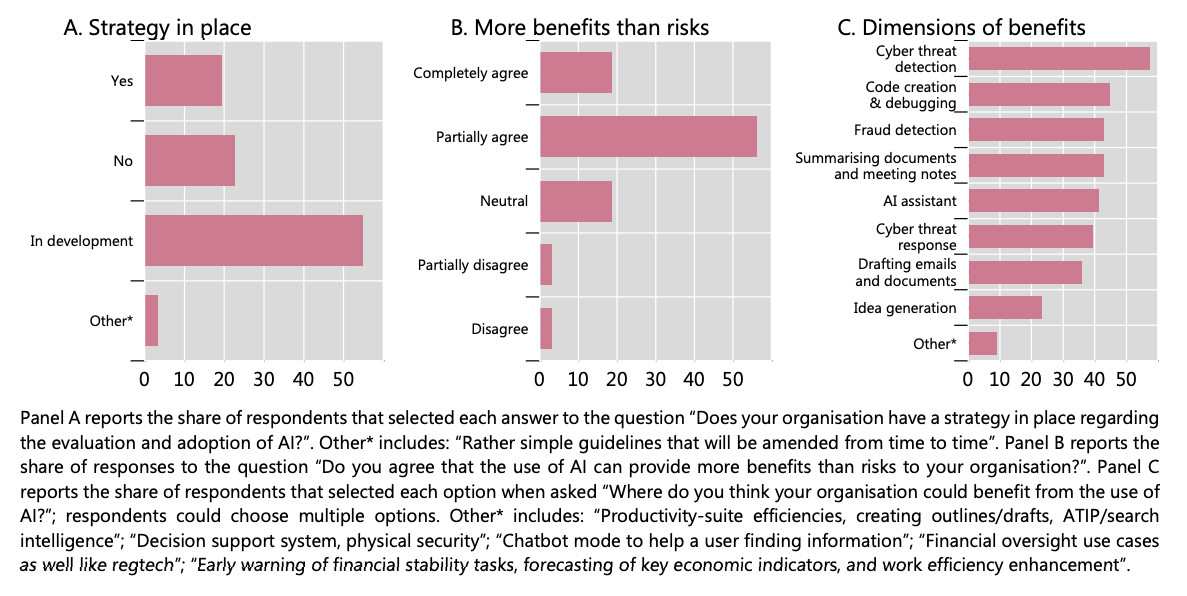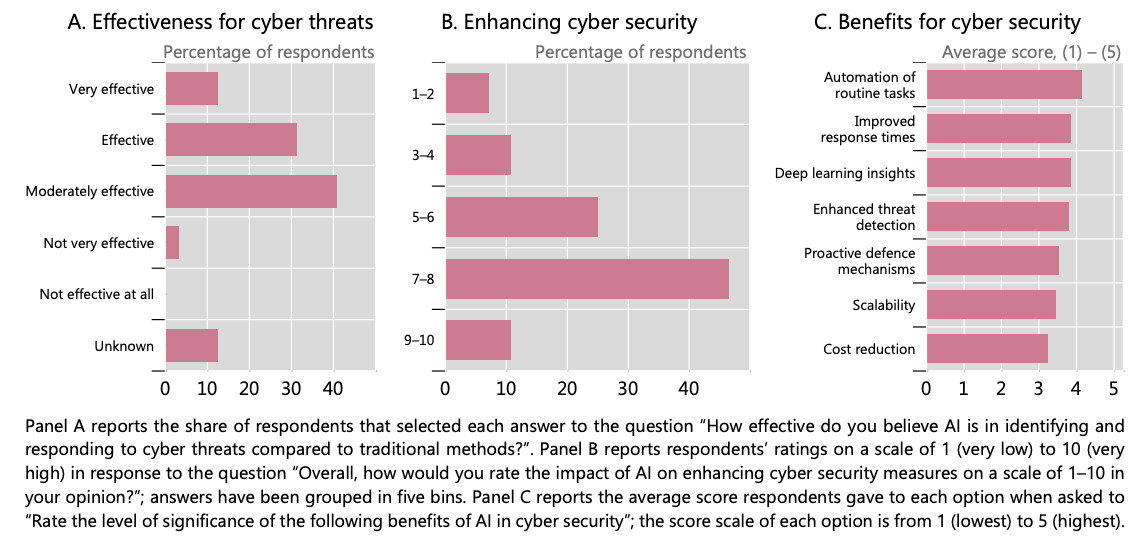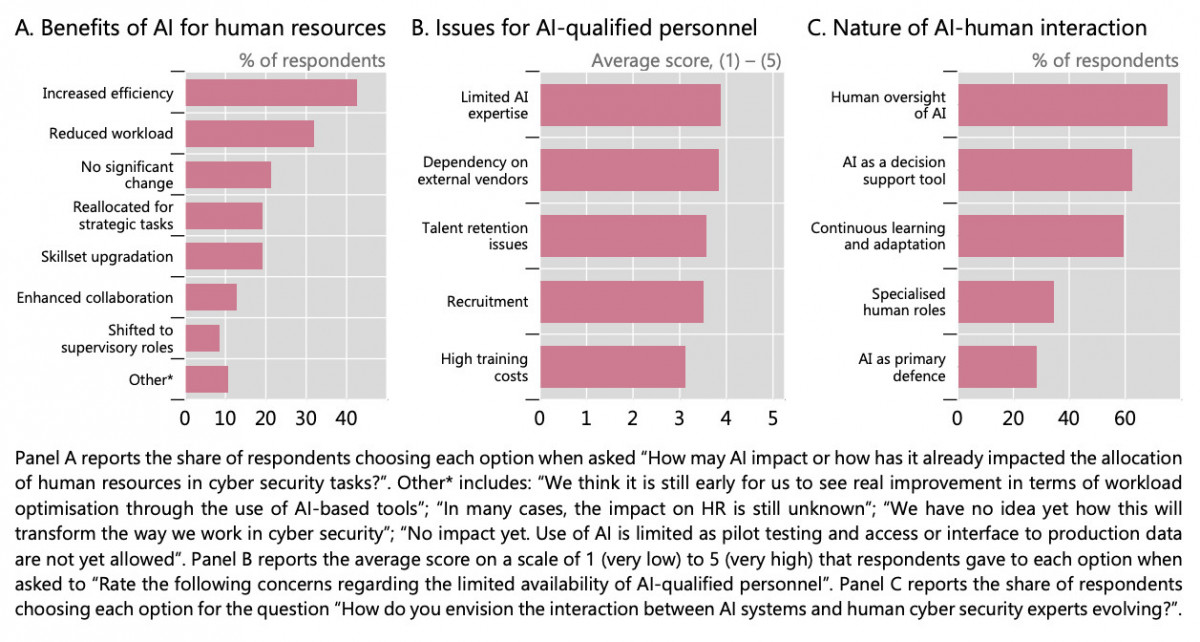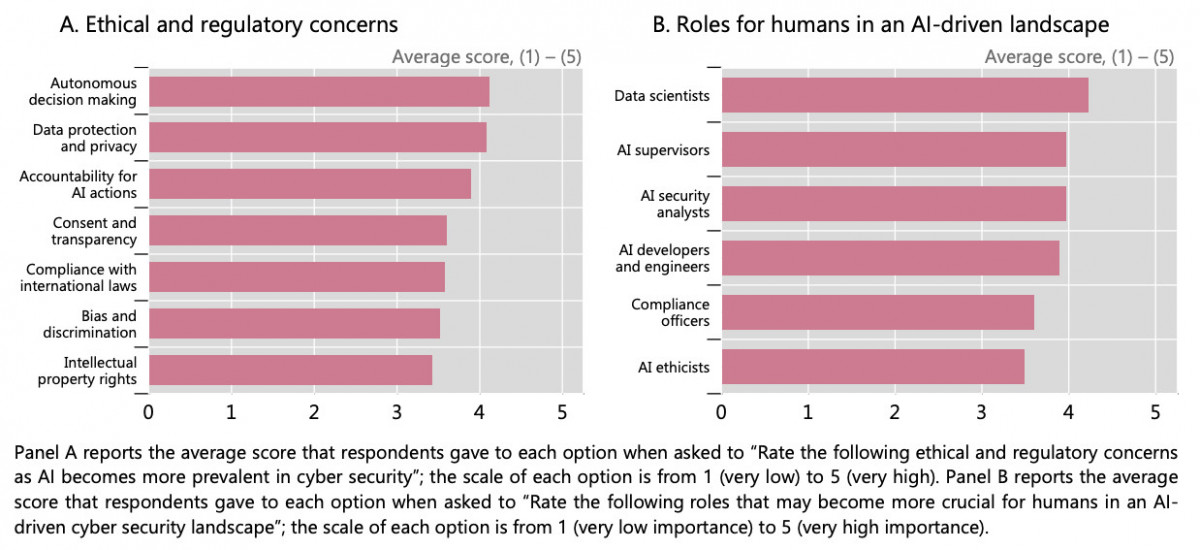Building for the Future: Central Banks Are Paving the Way for Robust Cybersecurity Through Innovations in Gen AI
by
According to the Global Cyber Resilience Group's latest survey, 26% of central banks are setting their sights on adopting Generative AI technology within the next couple of years, whereas 71% are already experimenting with some form of AI. Nonetheless, only 19% report having a solid strategy to weave Gen AI into their operations, leaving a significant 55% still plotting their course amid hesitations about its optimal application and associated risks.
The financial sector faces serious threats, particularly from the rising complexity and frequency of cyber intrusions. Central banks are especially at risk due to their essential role in safeguarding sensitive information and the financial systems as a whole. The arrival of Generative AI models like ChatGPT has opened up new avenues for enhancing cybersecurity but also presents some challenges.
Alisa Davidson

The report highlights a range of practical applications of generative AI being adopted by central banks, such as detecting fraudulent activities, identifying cyber threats, and automating routine administrative tasks. These advancements not only allow central banks to allocate more resources toward vital protective measures but also enhance their operational efficiency. Yet, integrating these technologies is complex and demands thorough planning and a significant investment in both human talent and technical innovations. April 25, 2025
Central banks are keenly aware of AI's substantial role in fortifying cybersecurity measures.
by
A noteworthy 57% of respondents cited enhanced threat identification as the foremost advantage of Generative AI, enabling them to detect potential cyber threats by sifting through vast datasets—something conventional methods struggle to achieve. Alisa Davidson Other claimed benefits include fraud detection, which taps into AI's aptitude for spotting unusual patterns indicative of fraudulent actions, as well as the ability to generate and debug code, expediting the development of secure software systems.
Photo: Efficacy of Generative AI in Combating Cyber Threats

Moreover, Generative AI aids in boosting operational efficiency by automating mundane tasks, such as drafting emails and summarizing documents. This functionality lightens the load for cybersecurity teams, allowing them to redirect their focus toward more complex and critical components of their security frameworks. April 25, 2025
Opportunities for Strengthening Cybersecurity
There are numerous strategies central banks can harness to elevate their cybersecurity framework with the aid of Generative AI. Traditionally, cyber risk management has relied on conventional machine learning approaches; however, Generative AI can greatly enhance these capabilities.
When compared to standard methods, Generative AI is capable of quicker and more precise detection and response to cyber threats. By automating labor-intensive tasks, it allows cybersecurity experts to focus on higher-priority initiatives. This transition enables central banks to shift from a reactive stance to a proactive one regarding threat management, empowering them to spot and address risks before they escalate. Additionally, leveraging adaptive machine learning algorithms helps ensure continuous refinement of cybersecurity defenses in the face of evolving threats.
Challenges and Risks Associated with Expanding Generative AI Use
Despite the advantages, adopting Generative AI is not without its risks and hurdles. There is the potential for unauthorized exposure of sensitive data, as well as the emergence of new cybersecurity risks such as social engineering attacks and zero-day vulnerabilities. This situation is particularly concerning when AI systems are trained on extensive datasets, which may include confidential information. A significant obstacle to effective deployment is the scarcity of skilled personnel versed in both AI and cybersecurity practices.
Photo: Risks and Challenges Linked to AI Usage in Cybersecurity

To manage the complexities introduced by AI-driven cybersecurity, central banks must invest in training programs that build a workforce capable of handling these advanced systems. Given the dynamic nature of AI technologies, ongoing updates and monitoring are essential to fend off new threats, which requires substantial financial resources and human capital. Failure to address these challenges could lead to significant operational disruptions and security breaches. Know More
The report underscores the importance of investing in human resources and IT infrastructure to fully capitalize on Generative AI's benefits. While central banks are beginning to utilize cloud-based Generative AI solutions, they do so cautiously, implementing stringent security measures to protect these environments and ensuring data privacy.
Know More
It is also widely acknowledged that, although general-purpose AI can efficiently manage regular cybersecurity tasks, human oversight remains critical to ensure ethical outcomes and keep AI systems continuously learning. Central banks should prioritize hiring and training professionals who possess expertise in both cybersecurity and AI technologies.
Photo: The Interplay of AI, Cybersecurity, and Central Bank Personnel

To keep pace with the latest advancements in both cybersecurity and artificial intelligence, personnel should engage in continuous learning and training programs. By consistently investing in human capital, central banks can effectively leverage AI while mitigating associated risks. Encouraging a culture of perpetual learning and innovation strengthens security measures and helps stay ahead of emerging threats. Read More
With an imminent adoption rate that approaches 100%, the outlook for Generative AI in central banking is promising. However, to realize its full potential, challenges and risks need to be addressed for successful integration. By navigating the complexities posed by emerging cyber threats, central banks can harness the full power of artificial intelligence.
Read more
Furthermore, fostering global collaboration and information sharing will be vital for the successful implementation of Generative AI in the realm of cybersecurity. Groups like the Financial Stability Board and the G7 are already working toward establishing global cybersecurity standards for the financial sector. Enhanced cooperation between central banks and regulatory bodies in this age of artificial intelligence may lead to a more cohesive and effective approach to managing cyber threats.
Photo: The Future Landscape of AI and Cybersecurity

Generative AI presents central banks with a groundbreaking opportunity to enhance their cybersecurity frameworks. While the technology offers numerous advantages, new challenges also demand careful consideration. By employing strategic planning, ethical evaluations, and making substantial investments in both human talent and technological tools, central banks can navigate the complexities involved with AI implementation and bolster their cybersecurity measures. News Report
Please be aware that the information provided on this page is for informational purposes only and should not be construed as legal, tax, investment, or financial advice. Always invest responsibly and seek independent advice if you're uncertain. For more details, we encourage you to review the terms, conditions, and support resources offered by the issuer or advertiser. MetaversePost is dedicated to delivering accurate and impartial reporting, but please note that market conditions can change without prior notice.
Alisa Davidson
April 25, 2025 Press Releases Victoria writes about a broad spectrum of technology topics, including Web3.0, AI, and cryptocurrencies. Her wealth of experience allows her to produce insightful articles for a diverse audience.
Business
Blum Commemorates Its One-Year Anniversary with Honors for 'Best GameFi App' and 'Best Trading App' at Blockchain Forum 2025
Markets











